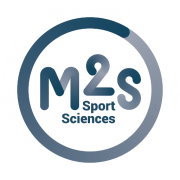Approximately 40% of patients develop muscle atrophy during their hospitalization in the intensive care unit (ICU). Depending on the severity of the primary disease, muscle atrophy in ICU patients can be quick and severe, severely impacting patient prognosis and increasing hospital costs. The direct impact of the biological systemic environment on ICU-muscle weakness remains relatively unexplored, as does its influence on muscle adaptations induced by therapeutic countermeasures, such as active mobilization or electrical stimulation. Ex vivo coculture models present promising possibilities for addressing these questions, especially the use of serum or plasma samples from volunteers or patients collected under various physiological or pathological conditions. Such approach could enable an understanding of how human muscle cells adapt to the organism's systemic environment during intensive care hospitalization.
The primary objective of the REAMUS project is to characterize in vitro the extent to which the systemic environment of ICU patients at different stages of hospitalization (1) contributes to muscle atrophy and metabolic alterations, and (2) affects muscle adaptations in response to contractile activity. Based on a cohort of patients at various stages of illness severity, we ultimately aim to correlate the comprehensive biological and clinical data characterizing their health status with the in vitro responses observed, in order to identify complex clinical and biological signatures capable of predicting (1) the risk and severity of ICU-muscle weakness, and (2) the patient’s ability to respond to therapeutic strategies targeting the affected muscles.
Based on these preclinical results, the ultimate goal is to propose a personalized approach to early rehabilitation in the ICU by prioritizing this strategy for the most responsive patients and/or at the most opportune timing.
This project is conducted in collaboration with the Centre Hospitalier de Saint Brieuc
